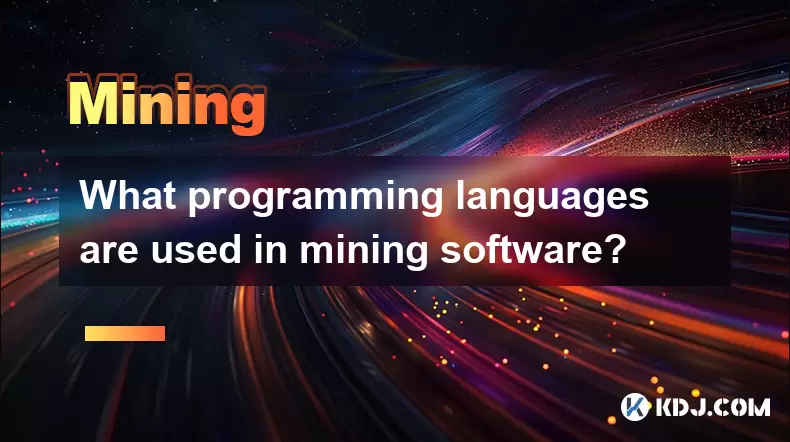-
 Bitcoin
Bitcoin $120400
1.77% -
 Ethereum
Ethereum $3615
7.90% -
 XRP
XRP $3.580
17.84% -
 Tether USDt
Tether USDt $1.001
0.06% -
 BNB
BNB $729.4
1.25% -
 Solana
Solana $179.9
5.04% -
 USDC
USDC $0.0000
0.01% -
 Dogecoin
Dogecoin $0.2311
8.22% -
 TRON
TRON $0.3226
4.04% -
 Cardano
Cardano $0.8490
12.85% -
 Hyperliquid
Hyperliquid $46.45
0.72% -
 Stellar
Stellar $0.4913
8.54% -
 Sui
Sui $4.027
2.00% -
 Chainlink
Chainlink $18.51
11.67% -
 Hedera
Hedera $0.2818
21.51% -
 Avalanche
Avalanche $24.03
7.40% -
 Bitcoin Cash
Bitcoin Cash $508.5
2.90% -
 Shiba Inu
Shiba Inu $0.00001496
3.24% -
 UNUS SED LEO
UNUS SED LEO $8.961
1.83% -
 Toncoin
Toncoin $3.264
3.13% -
 Litecoin
Litecoin $104.6
8.15% -
 Polkadot
Polkadot $4.389
6.11% -
 Uniswap
Uniswap $9.924
10.63% -
 Monero
Monero $337.9
0.49% -
 Pepe
Pepe $0.00001376
2.79% -
 Bitget Token
Bitget Token $4.830
2.46% -
 Ethena USDe
Ethena USDe $1.001
0.05% -
 Dai
Dai $1.000
0.02% -
 Aave
Aave $325.2
1.66% -
 Bittensor
Bittensor $423.7
-0.85%
What programming languages are used in mining software?
C++ and CUDA are widely used in mining software for their high performance and GPU optimization capabilities, while Python supports automation and pool connectivity.
Jul 15, 2025 at 06:49 pm

Understanding the Role of Programming Languages in Mining Software
Mining software is an essential component of the cryptocurrency ecosystem, enabling miners to validate transactions and secure blockchain networks. The programming languages used in mining software play a critical role in determining performance, efficiency, and compatibility across different hardware platforms.
C++ stands out as one of the most widely used languages in mining software development. Its high performance and low-level control make it ideal for handling complex cryptographic computations required in mining algorithms like SHA-256 or Ethash.
CUDA (Compute Unified Device Architecture), although not a traditional programming language, is crucial when developing GPU-based mining applications. It allows developers to write programs that execute on NVIDIA GPUs, significantly boosting mining throughput by leveraging parallel processing capabilities.
OpenCL and Its Significance in Cross-GPU Mining
Another important language-like framework used in mining software is OpenCL. Unlike CUDA, which is specific to NVIDIA GPUs, OpenCL supports multiple vendors including AMD, Intel, and others. This cross-platform capability makes it a preferred choice for developers aiming to build versatile mining applications compatible with various GPU architectures.
- OpenCL enables efficient execution of mining algorithms on heterogeneous systems.
- Developers can optimize kernels to run on different devices such as CPUs, GPUs, and FPGAs.
- It provides flexibility in managing memory and workloads during mining operations.
Python's Role in Mining Tools and Scripts
While Python may not be the go-to language for writing core mining algorithms due to its interpreted nature and slower execution speed, it plays a significant role in auxiliary functions. Python is often used for creating scripts, monitoring tools, configuration utilities, and even mining pool connectors.
- Miners use Python scripts to automate tasks like restarting failed processes or switching between mining pools.
- It’s also used in developing APIs that communicate with mining pools or local mining clients.
- Libraries like PyStratum help in implementing Stratum protocol communication between miners and pools.
CUDA vs OpenCL: A Comparative Insight
When choosing between CUDA and OpenCL for GPU mining, several factors come into play. CUDA offers superior optimization tools and better integration with NVIDIA GPUs, making it a favorite among Ethereum and other GPU-mined coin developers.
- CUDA provides extensive debugging and profiling tools through Nsight and Visual Profiler.
- OpenCL has broader device support but may require more effort to achieve performance parity across different hardware.
- Developers targeting specific GPU brands may prefer one over the other based on ecosystem maturity and community support.
Low-Level Languages and Hardware Interaction
In addition to high-performance languages like C++ and frameworks like CUDA/OpenCL, mining software often requires direct interaction with hardware components. For this purpose, Assembly language and C are occasionally used to fine-tune performance-critical sections of the code.
- Assembly helps in optimizing hash calculation loops at the register level for maximum throughput.
- C is commonly used for system-level tasks such as driver interfacing and memory management.
- These lower-level languages ensure minimal overhead and maximize computational efficiency in mining routines.
Frequently Asked Questions
Can I develop my own mining software using Python?
Yes, you can develop supporting tools and scripts using Python, but not the core mining engine. Python is best suited for automation, logging, and interfacing with mining pools rather than performing the actual hashing operations.
Is CUDA better than OpenCL for mining?
It depends on your target hardware. If you're using NVIDIA GPUs, CUDA offers better tooling and performance optimizations. For multi-vendor setups or AMD cards, OpenCL is more appropriate.
Do FPGA miners use the same languages as GPU miners?
No, FPGA mining typically involves hardware description languages like Verilog or VHDL. These differ significantly from the languages used in GPU or CPU mining software.
Are there any mining software written entirely in Java?
Java is rarely used for mining software due to its performance limitations. However, some pool management tools or wrappers might utilize Java for backend services or web interfaces.
Disclaimer:info@kdj.com
The information provided is not trading advice. kdj.com does not assume any responsibility for any investments made based on the information provided in this article. Cryptocurrencies are highly volatile and it is highly recommended that you invest with caution after thorough research!
If you believe that the content used on this website infringes your copyright, please contact us immediately (info@kdj.com) and we will delete it promptly.
- Bitcoin, Cloud Mining, Crypto Wealth: Riding the Bull Run in Style
- 2025-07-18 12:30:12
- Ethereum Gas Fees, ERA Airdrop: A New Yorker's Take on Crypto Chaos
- 2025-07-18 12:50:12
- Bitcoin, Altcoins, and the Crypto Market: Navigating Trump's Crypto Ventures and the Evolving Digital Landscape
- 2025-07-18 12:50:12
- Bitcoin Holdings and the Smarter Web: A Match Made in Digital Heaven?
- 2025-07-18 12:10:12
- Bitcoin, MSTR & Saylor's Strategy: A Winning Trifecta?
- 2025-07-18 08:30:13
- Bitcoin Mortgages Down Under: A New Wave in Australian Homeownership?
- 2025-07-18 08:50:12
Related knowledge

How are crypto mining profits taxed?
Jul 14,2025 at 12:28am
Understanding Cryptocurrency Mining and TaxationCryptocurrency mining involves validating transactions on a blockchain network and earning rewards in ...

How to keep a mining rig cool
Jul 12,2025 at 01:42pm
Understanding the Importance of Cooling in Mining RigsCryptocurrency mining is an intensive process that places heavy demand on hardware components, p...

How to mine crypto on a gaming PC
Jul 16,2025 at 12:00pm
What is Crypto Mining on a Gaming PC?Crypto mining involves using your computer's processing power to validate transactions on a blockchain network. A...

How to set up a crypto miner
Jul 16,2025 at 09:14am
Understanding Ethereum Gas Fees: What Are They and How Do They Work?Ethereum gas fees are a fundamental aspect of the network, representing the cost r...

Can you mine crypto on a laptop?
Jul 16,2025 at 02:21am
Is It Feasible to Mine Cryptocurrency on a Laptop?Mining cryptocurrency on a laptop is technically possible, but feasibility depends heavily on the ha...

Is crypto mining worth it?
Jul 16,2025 at 01:21am
Understanding the Basics of Crypto MiningCrypto mining refers to the process of validating transactions on a blockchain network by solving complex mat...

How are crypto mining profits taxed?
Jul 14,2025 at 12:28am
Understanding Cryptocurrency Mining and TaxationCryptocurrency mining involves validating transactions on a blockchain network and earning rewards in ...

How to keep a mining rig cool
Jul 12,2025 at 01:42pm
Understanding the Importance of Cooling in Mining RigsCryptocurrency mining is an intensive process that places heavy demand on hardware components, p...

How to mine crypto on a gaming PC
Jul 16,2025 at 12:00pm
What is Crypto Mining on a Gaming PC?Crypto mining involves using your computer's processing power to validate transactions on a blockchain network. A...

How to set up a crypto miner
Jul 16,2025 at 09:14am
Understanding Ethereum Gas Fees: What Are They and How Do They Work?Ethereum gas fees are a fundamental aspect of the network, representing the cost r...

Can you mine crypto on a laptop?
Jul 16,2025 at 02:21am
Is It Feasible to Mine Cryptocurrency on a Laptop?Mining cryptocurrency on a laptop is technically possible, but feasibility depends heavily on the ha...

Is crypto mining worth it?
Jul 16,2025 at 01:21am
Understanding the Basics of Crypto MiningCrypto mining refers to the process of validating transactions on a blockchain network by solving complex mat...
See all articles

























































































